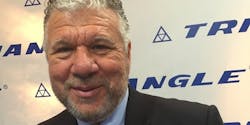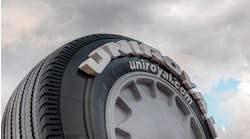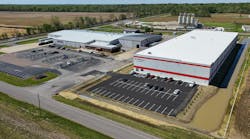As the top executive at the North American subsidiary of one of China’s largest tire manufacturers, Manny Cicero, CEO of Triangle Tyre USA, has a unique perspective on how COVID-19 has impacted tire manufacturing.
Parent company Triangle Tyre Co. Ltd. has four plants in its home country, all of which are operating at – or near – full capacity.
That wasn’t the case this past January and February, when Triangle suspended production at the plants for three weeks to observe the Chinese New Year holiday – and extended the shutdown for an additional two weeks when the Chinese government imposed a nationwide lockdown to limit the spread of COVID-19.
“Like all Chinese manufacturers, we were hit hard at the beginning of this virus (outbreak),” says Cicero, who likens Triangle to “the canary in the coal mine.”
“We were closed for three weeks for the New Year and two more weeks. Everyone was on strict lockdown – the whole country – and much more severely than what we’ve seen in the U.S.”
After the shutdown period, Triangle – after taking proper safety precautions – began ramping up production again. On March 18, Triangle announced to the U.S. market that its plants were operating at near-full capacity.
“A lot of our factory production is now serving the domestic (Chinese) market, which has come back strong,” says Cicero. “And I hope that’s what we see in the States.”
Closer to customers
Triangle sells very few passenger and light truck tires in the U.S. due to high import tariffs and duties. “Our focus here has largely been commercial,” he notes.
“When plants in China shut down, we drew down our inventory.”
Since then, the firm has made a concentrated effort to build up its stock for the U.S. market. Triangle distributes tires out of a three-year-old, 53,000-square-foot center in the Nashville suburb of Madison, Tenn.
“The best thing we can do for our customers is have the product closer to them on the ground,” says Cicero. “We have no shortages that I can see. Truck tires, OTR tires and specialty trailer tires… we have a good supply position. And what we will have is even more inventory.
“We’re seeing continued resilience in the commercial tire market,” he continues. “It’s been impacted, but not nearly to the extent of passenger and light truck tires. Demand for commercial has been relatively good. And demand for construction tires is still there.
“Right now, the toughest thing is that customers are reluctant to take large inventory positions, so container orders have been affected. That’s why we’re increasing our inventory in the States. We’re expanding our domestic warehouse capacity.”
Back to normal?
When will the U.S. tire industry return to a state of normalcy? Cicero offers these thoughts.
“If we use China as an example – and if we lag two or three months behind them, like we seem to do – they were shut down in January and February. And now things are seemingly back to normal.
“It would follow, then, that by mid-summer, we will be back to normal in the States, following the China curve.”
The biggest mitigating factor, however, could be how each country responded to the initial outbreak of COVID-19.
“China had a centralized response,” says Cicero. “We had a decentralized, state-by-state response,” which makes pinning down a recovery date much more difficult.
“Our industry is lucky because we’ve been deemed an essential industry. Trucks are rolling. Loaders and dump trucks are rolling. As bad as things are, I think those of us who are in the tire industry are the lucky ones.”




